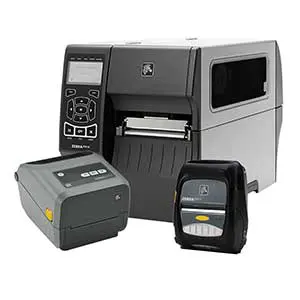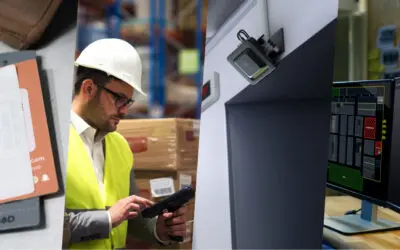In a recent blog, we offered an overview of thermal printing technology. Our primary focus was on the fundamental differences between thermal transfer printing and direct thermal printing. Both technologies use a heated printhead to transfer text, barcodes, and images to the print media, but they do it in different ways.
Here’s a quick tech review: With direct thermal, the printhead transfers the image to heat-sensitive media, often a paper label or receipt paper. A thermal transfer printer, however, adds a heat-sensitive ribbon into the process, allowing images to be transferred onto a variety of labels, paper, and other media.
Thermal transfer printing offers a significant durability and longevity advantage over direct thermal printing. Receipts or labels printed with a direct thermal printer are great for relatively short-term applications, but they are sensitive to heat and light which can cause the image to degrade or fade over time. Thermal transfer printing, however, produces archival-quality output that can remain legible for years.
So, considering the durability advantage offered by thermal transfer technology, let’s look at some applications that are well-suited for thermal transfer printers.
Long-Term Product Identification
Any label that will be in use for more than a year should almost always be printed via thermal transfer. While some direct thermal labels might remain readable for that long, the chance that they will become illegible increases with time. So, it makes sense to use thermal transfer printers to produce labels for parts or inventory that may be in storage for an extended period.
Thermal transfer labels are also one of the best options for asset tagging. Whether you’re tagging a laptop computer, handheld mobile computer, or forklift, the built-in durability advantages that are inherent with thermal transfer labels will ensure that serial numbers, barcodes, and other information remain legible throughout the life of the asset.
Use in Challenging Environments
When a label will be subjected to long-term exposure to ultraviolet light, extreme temperatures, or other adverse conditions, a thermal transfer label is going to offer the best performance. Long-term fade resistance and the ability to print on substrate or other paper offer a huge advantage when labeling materials, parts, or supplies that are stored outdoors in bright sunlight—think building materials, landscaping equipment, or parts stored in a laydown yard.
The durability of thermal transfer printing is also essential for labels that will be used in extreme temperatures. Extreme heat that could cause a direct thermal label to turn entirely black usually isn’t a problem for a thermal transfer label. Thermal transfer printing is also dramatically more resistant to moisture, making thermal transfer labels a better choice for use on items that are subjected to humidity swings as they move in and out of cold storage environments.
Sensitive Materials Stored for Indeterminate Time Periods
Another set of factors to consider when evaluating printing technology—particularly for labels—is the value and importance of the information that you need to convey, especially when you’re not certain how long an item will be in storage. This is often a deciding factor in laboratories, pharmaceuticals, and other healthcare applications where high-value assets may be in storage for many years. In those cases, a thermal transfer label printed on a long-lasting substrate is almost always your best option.
Hazardous materials offer a similar challenge. Often you have no idea exactly how long hazardous waste and other materials will be in storage, but you simply can’t afford to lose track of them because a label degraded and became illegible over time. That’s definitely a situation where you should use a thermal transfer label that ensures a long lifetime.
These are just a few of the applications where thermal transfer labels shine. Contact MSM Solutions to learn more about durable, reliable thermal transfer printers like the ones we recommend from Zebra Technologies.



